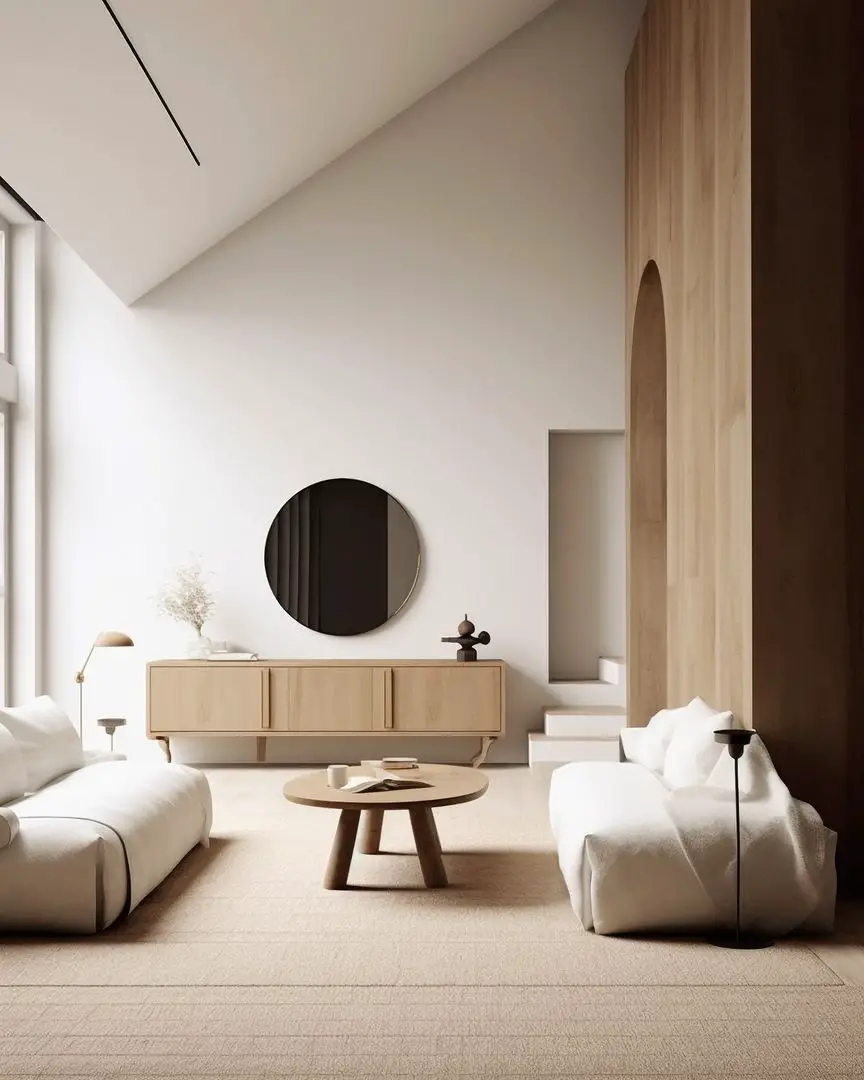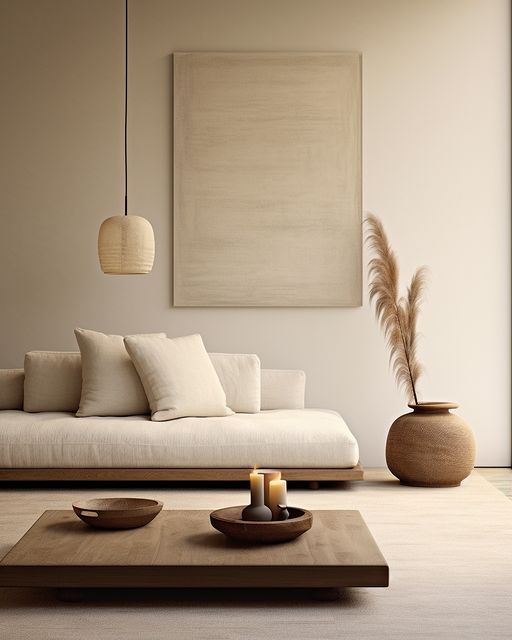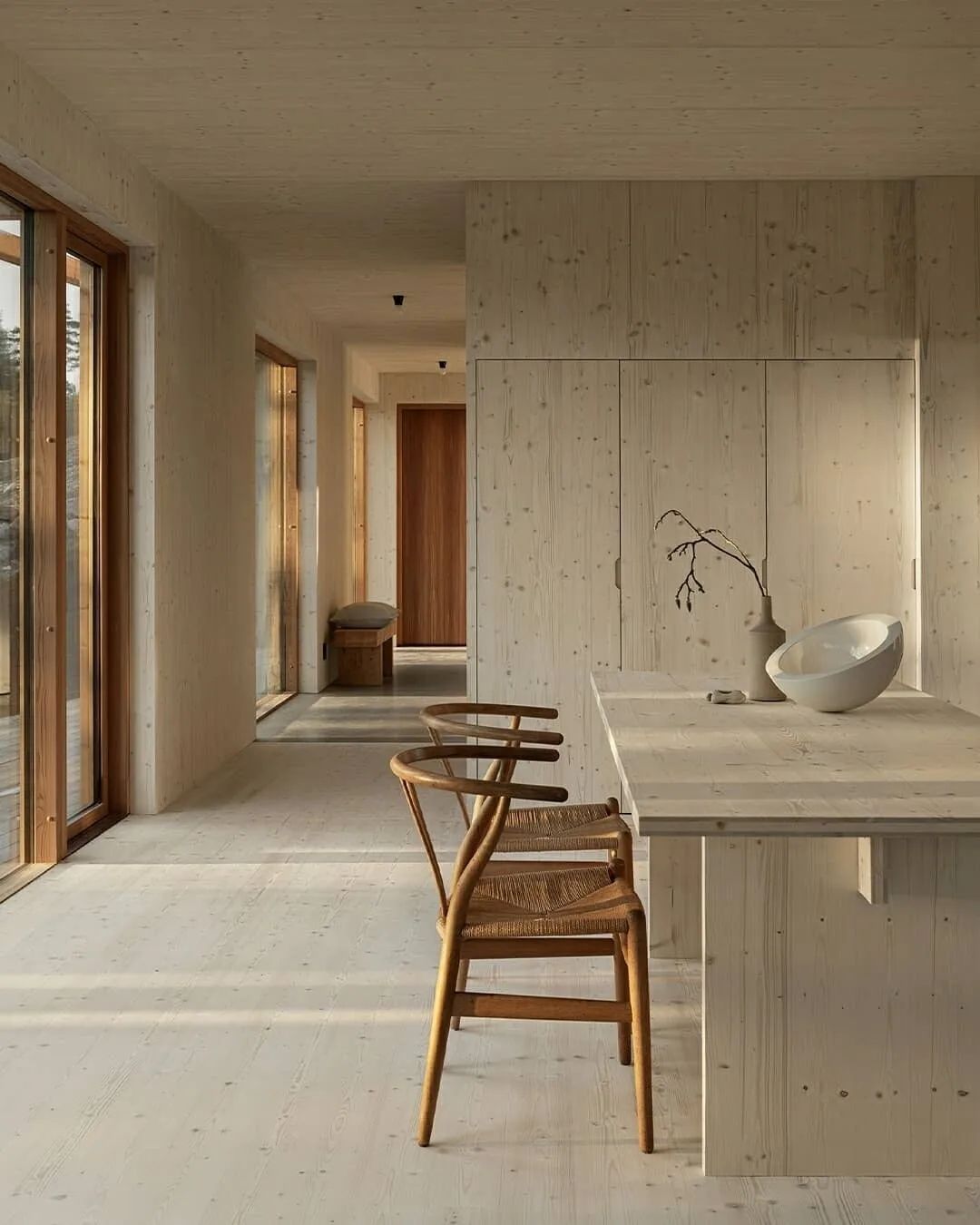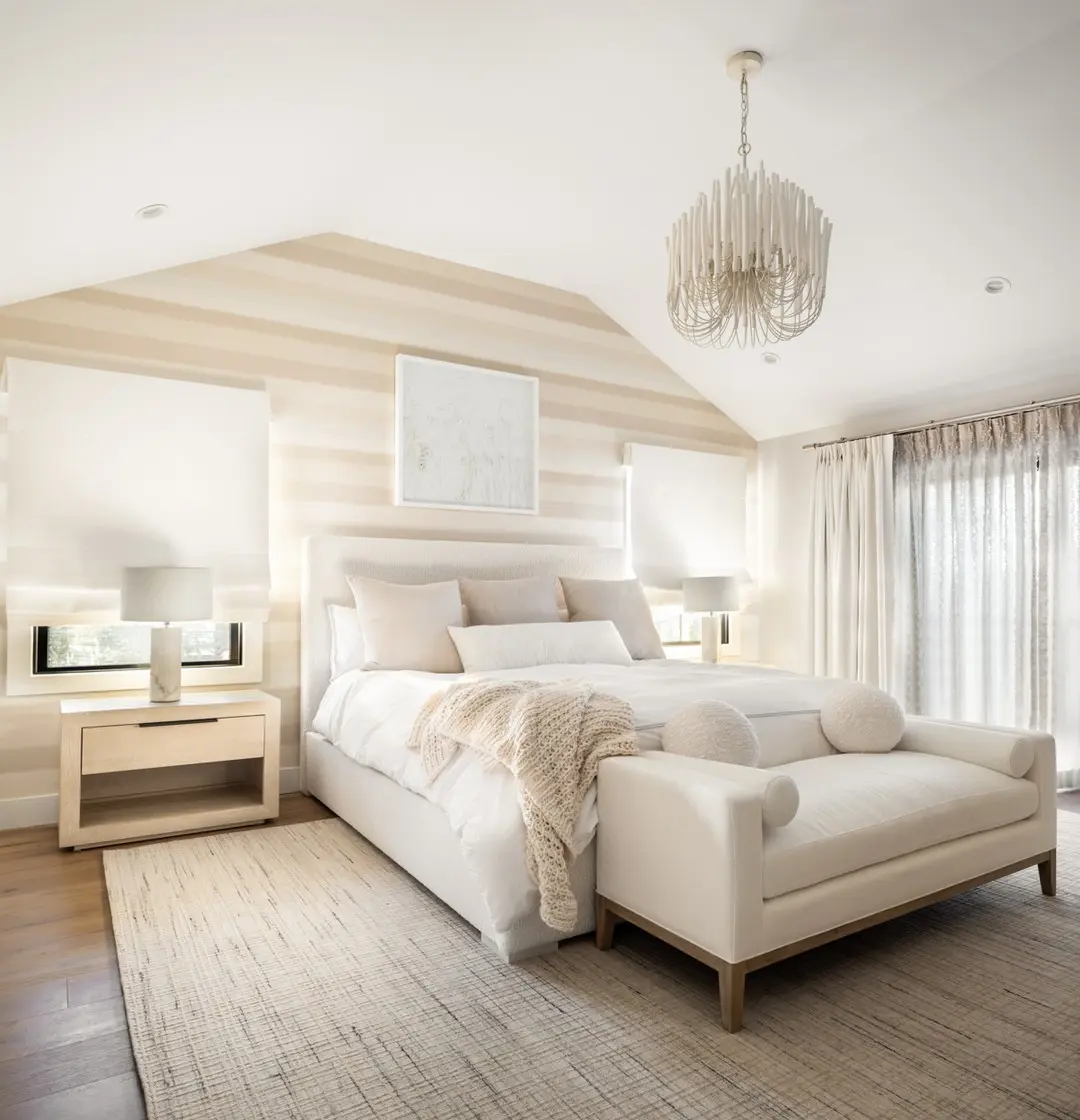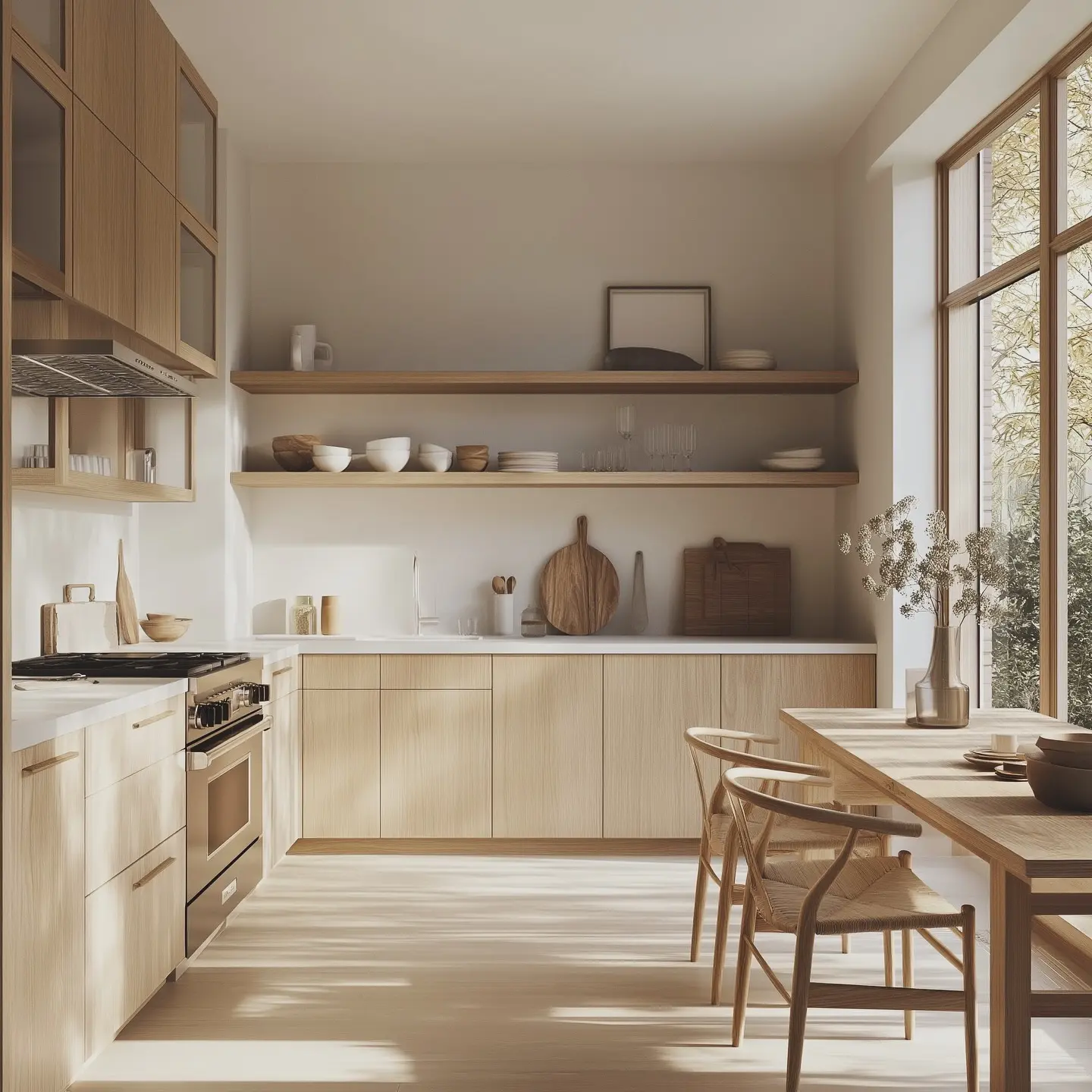In ‘How Does Minimalism Influence the Creation of a Sense of Space‘ we unravel the connection between minimalism and the creation of space.
In the world of interior design, one philosophy has gracefully captured hearts worldwide: minimalism. It’s a concept that breathes life into spaces, inviting tranquility and a sense of openness. In this post, we’ll delve into the captivating interplay between minimalism and the creation of a spacious ambiance within your home.
Imagine a space where every element finds its purpose, where visual clutter takes a back seat, and where each breath is met with a tranquil expanse. This is the essence of minimalistic design. It encapsulates a synergy of simplicity, functionality, and purposeful choices. Beyond the aesthetic appeal, minimalism holds the key to crafting rooms that not only appear larger but also instill a soothing sense of serenity.
Throughout this blog post, we’ll discuss the various dimensions of minimalism’s impact on space. From decluttering to the artful dance of color and light, we’ll unveil how each element contributes to spaciousness.
In this post you’ll discover the power of minimalism to transform not just your interior, but also the way you experience and relish the spaces you call home.
How Does Minimalism Influence the Creation of a Sense of Space
Understanding Minimalism in Interior Design
At its core, minimalism is more than just a design trend. It’s a philosophy that celebrates the art of simplicity. This approach thrives on the idea that less is indeed more, urging us to curate spaces with intention and purpose. Minimalism encourages us to strip away excess and prioritize what truly matters.
Central to minimalism are its core principles: simplicity, functionality, and purposeful choices. Simplicity reigns supreme, where each element finds its place in a harmonious composition. Functionality guides the selection of furnishings and decor, ensuring that every piece serves a practical purpose. Purposeful choices underscore the deliberate selection of items that resonate with the room’s essence, eschewing unnecessary embellishments.
To read more on minimalist style, check out our post on ‘The Power of Less: How to Achieve a Minimalist Look in Your Home.‘
Cultivating a Sense of Space with Minimalist Style
Step into a space adorned with minimalistic design, and you’ll notice an immediate sensation of calm. This tranquility arises from the decluttering magic that minimalism weaves. By intentionally removing excess and focusing on the essentials, minimalistic design creates an uncluttered environment that allows your eyes to rest and your mind to breathe.
A key player in the creation of space within minimalism is the concept of negative space. Also known as “white space,” this refers to the area left intentionally empty within a room. The importance of negative space cannot be overstated—it serves as the canvas on which the design elements are showcased. It’s the pause between notes in a melodious composition, allowing the mind to absorb and appreciate the beauty of each detail.
Negative space holds the power to transform rooms into open, airy havens. It’s the unspoken language of minimalistic design, whispering stories of simplicity and elegance. By allowing room for the eye to wander, negative space enhances the sense of openness within a space, creating an ambiance that feels both serene and expansive.
Minimalism’s Impact of Color and Light on Creating a Sense of Space
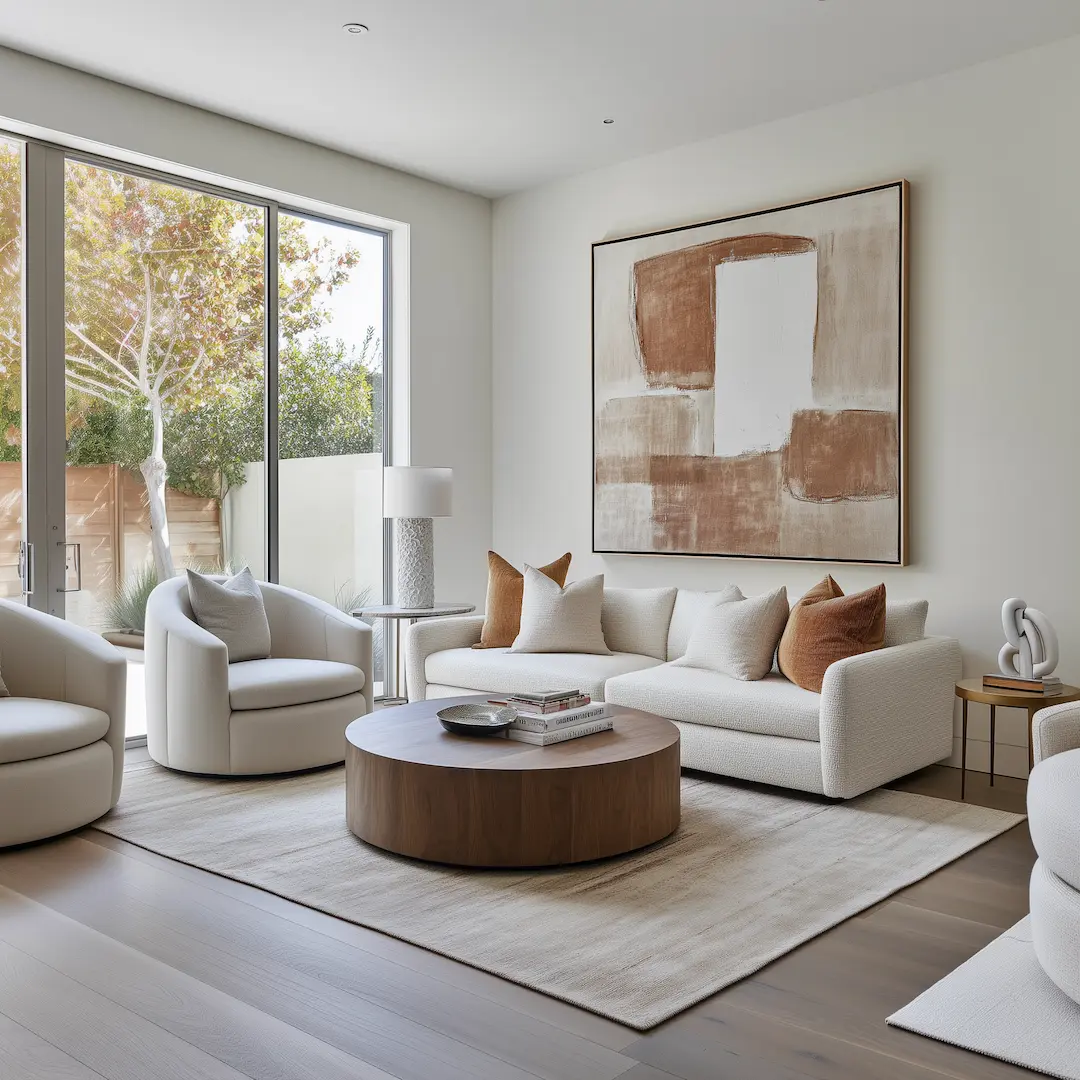
Color has the remarkable ability to influence our emotions and perceptions, and in minimalistic interiors, it serves as a potent tool. Neutral color palettes are often the stars of the show, creating a serene backdrop that allows other design elements to shine. Soft hues of whites, creams, and muted tones amplify the sense of space, making rooms appear larger and more ethereal.
However, minimalistic design doesn’t shy away from color entirely. Strategic pops of color can add personality and depth to a space, as long as they are thoughtfully integrated. In such environments, every color choice carries intention, adding layers of meaning to the overall design.
Light, both natural and artificial, also plays a pivotal role in crafting a spacious atmosphere. Natural light, streaming through unobstructed windows, blurs the lines between indoors and outdoors. It creates a seamless transition, making spaces feel boundless. Incorporating mirrors strategically amplifies this effect, bouncing light around the room and adding a touch of magic.
Streamlined Furnishings and Layout in Minimalism
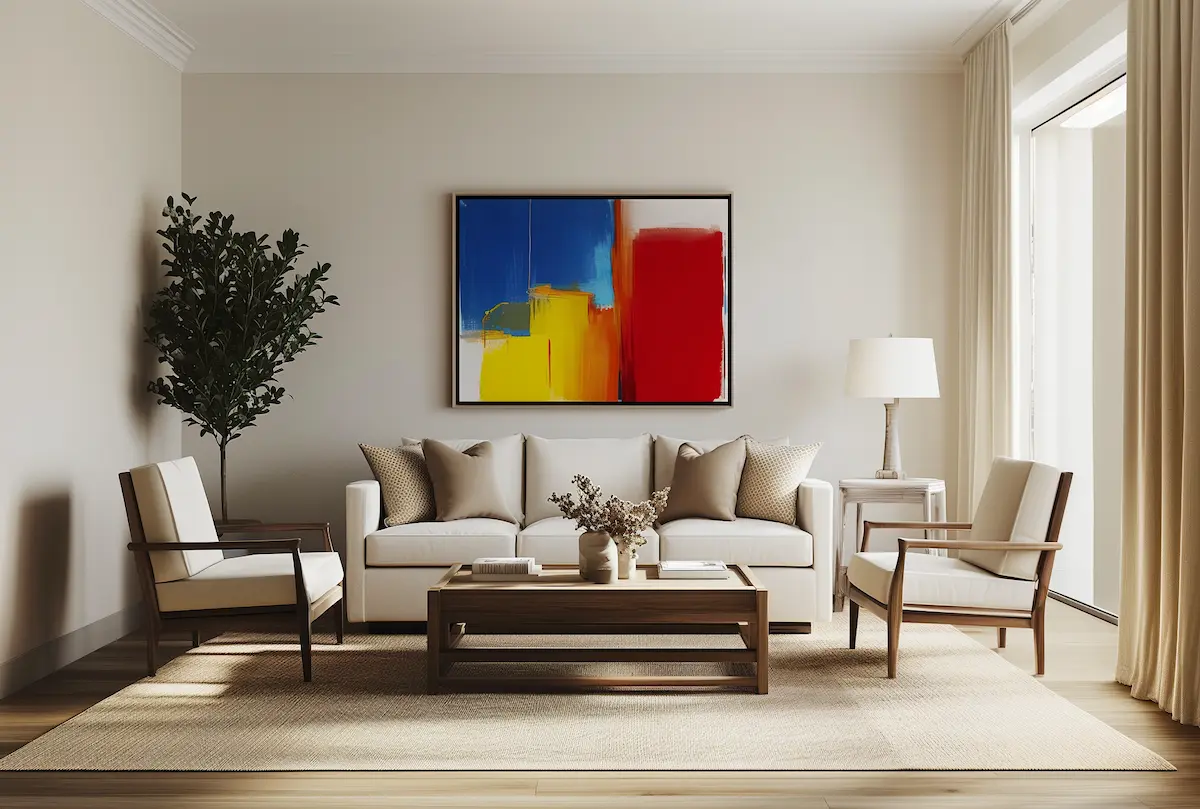
Step into a minimalistic space, and you’ll find that every piece of furniture is a deliberate choice. Minimalist furnishings contribute to an uncluttered ambiance, ensuring that each item serves a purpose and aligns with the room’s overall aesthetic. Clean lines and sleek forms dominate, emphasizing function over ornamentation.
Thoughtful furniture placement is an art form in minimalistic design. The layout is carefully orchestrated to maximize both visual flow and physical space. Open pathways invite you to explore without obstruction, while furniture placement creates a sense of harmony. Each piece complements the next, encouraging a seamless journey through the room.
Ultimately, the impact of streamlined furnishings and layout is twofold: it elevates the visual appeal of the room while allowing the space to breathe. The absence of unnecessary clutter fosters a sense of calm, and the choice to embrace simplicity ensures that the room remains open, inviting, and welcoming.
Exploring Minimalism’s Multi-Functional Elements
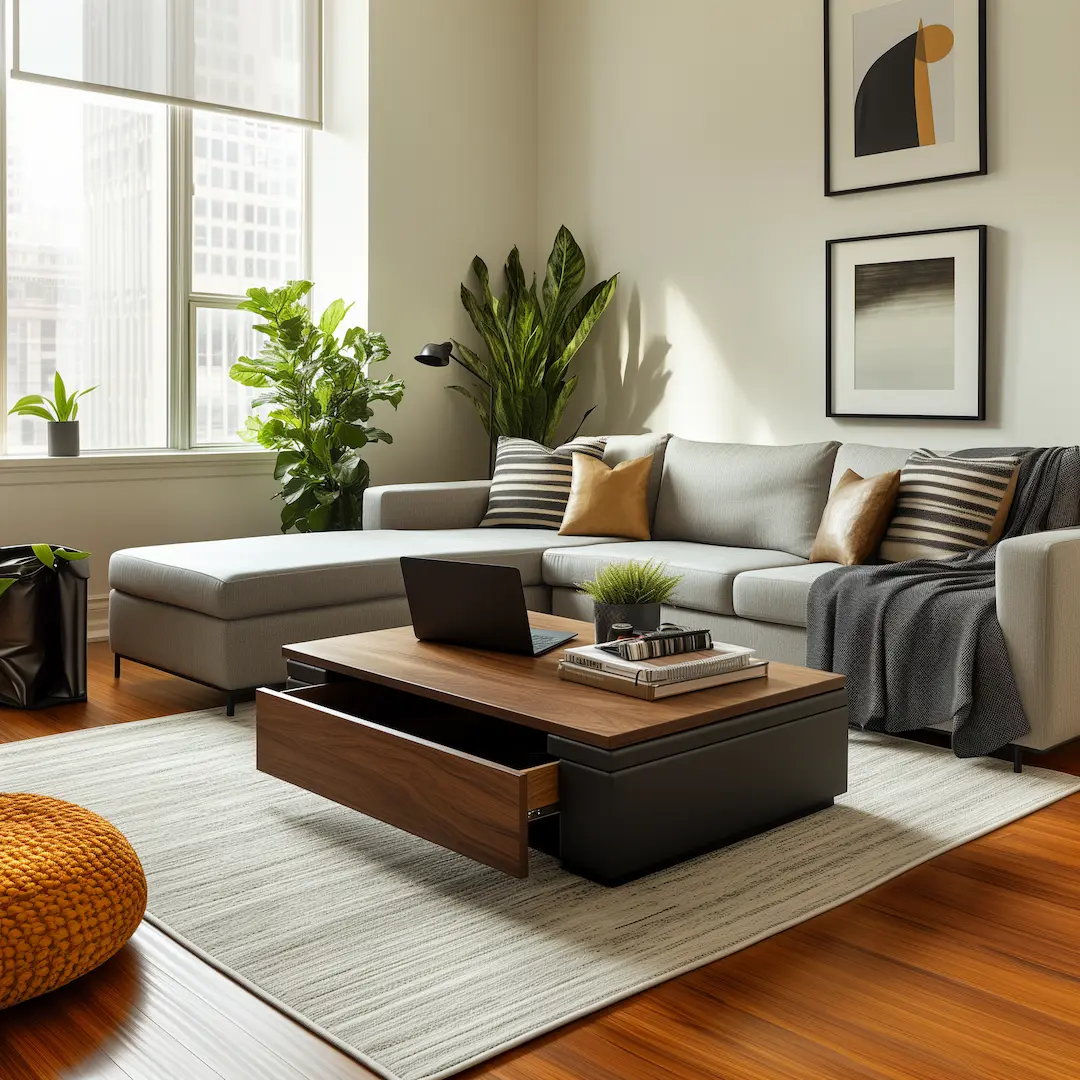
In the world of minimalistic design, every element plays a dual role—both functional and aesthetic. Multi-functional furniture and decor are the unsung heroes of spacious interiors. They are ingeniously designed to serve multiple purposes, adding value without occupying excess space. Coffee tables that transform into workstations, storage ottomans that hide away clutter, and sofa beds that welcome guests overnight—all contribute to the magic of multi-functionality.
Embracing these elements minimizes the need for excess furniture. With pieces that effortlessly adapt to various needs, rooms remain unburdened by the weight of excessive furnishings. This reduction in clutter creates a liberating sense of openness, allowing the room to shine and breathe. Multi-functional elements not only optimize space but also elevate the practicality of your living environment.
The Transformative Power of Minimalism on Sense of Space
Minimalism’s influence on the perception of space goes beyond aesthetics—it holds a profound impact on the way we experience our surroundings. Open, airy interiors that minimalistic design fosters evoke a sense of tranquility and freedom. The removal of visual clutter not only creates physical space but also offers mental clarity.
Psychologically, the impact of open, airy interiors is striking. The mind feels unburdened, free to roam and explore without the constraints of visual chaos. This sense of liberation extends to emotions as well; a clutter-free space allows for emotional space, enabling relaxation and fostering a positive state of mind.
In essence, minimalism’s effect on perception transforms rooms into more than just spaces—it turns them into sanctuaries of tranquility. The interplay of design and psychology creates an environment where you can breathe deeply, think clearly, and relish the joy of uncluttered living.
Adapting Minimalism to Different Spaces
Minimalism is a versatile design philosophy that seamlessly adapts to a myriad of spaces, from the serene bedroom to the bustling kitchen. Let’s explore how minimalism can be translated into various rooms, showcasing its ability to enhance the perception of space in diverse settings.
In the living room, sleek furniture and uncluttered surfaces create a serene oasis for relaxation. The bedroom transforms into a haven of tranquility with carefully selected furnishings and a restrained color palette. In the kitchen, minimalism ensures functionality reigns supreme, with each item having its rightful place.
The beauty of minimalism lies in its adaptability to different spatial needs. Whether you’re working with a compact apartment or an expansive villa, the principles of minimalism shine through. It’s a design approach that empowers you to curate each space with purpose, allowing the room’s unique essence to take center stage.
Tips for Embracing Minimalism to Achieve a Sense of Space
For those eager to infuse their homes with the magic of minimalism, here are some actionable tips to guide you on your journey:
- Start with Decluttering – Begin by decluttering your space, letting go of items that no longer serve a purpose.
- Prioritize Functionality – Opt for furnishings that serve a practical function while adding aesthetic value.
- Embrace Negative Space – Allow for breathing room within your decor, embracing the power of negative space.
- Choose a Cohesive Color Palette – Select a harmonious color palette that fosters unity and spaciousness.
- Multi-Functional Solutions – Invest in multi-functional furniture that adapts to different needs, reducing the need for excess items.
- Light and Mirrors – Incorporate ample lighting and mirrors to enhance the perception of space and create a luminous ambiance.
- Thoughtful Placement – Carefully consider the placement of furniture to optimize flow and create an uncluttered atmosphere.
By embracing these reader tips, you can embark on a transformational journey toward a minimalist-inspired living space. As you curate each corner with intention, you’ll experience the joy of unburdened living and the embrace of a more open, serene environment.
Conclusion
In the tapestry of interior design, minimalism emerges as a thread that weaves together aesthetics and purpose, creating spaces that transcend mere functionality. The journey we’ve embarked upon has unveiled the enchanting dance between minimalism and the creation of a sense of space within your home.
Through the deliberate curation of simplicity, functionality, and purposeful choices, minimalism breathes life into rooms, offering a haven of tranquility amidst the hustle of daily life. The magic of decluttering and the embrace of negative space work harmoniously to elevate the perception of openness, allowing your space to breathe and your mind to find solace.
From the strategic interplay of color and light to the artful arrangement of furniture, minimalism has shown us how each design element contributes to the symphony of spaciousness. Its influence extends beyond aesthetics, touching the realm of psychology and shaping the way we perceive our surroundings.
As you journey forward, envisioning your living spaces anew, remember that minimalism is more than a design trend—it’s a philosophy that empowers you to create spaces that reflect your essence and inspire a tranquil way of life. By embracing the principles and reader tips shared here, you’re poised to transform your home into an oasis of serenity, where the notion of space transcends the physical, resonating deeply within your heart and soul.
Related Posts:
- 5 Essential Elements of a Minimalist Dining Room
- Minimalist Dining Room Lighting for a Warm and Inviting Ambiance
- Top 10 Tips for Creating a Minimalist Living Room
- The Power of Less: How to Achieve a Minimalist Look in Your Home
- 10 Tips for Creating a Minimalist Bedroom

